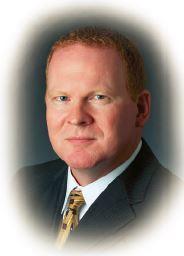 What do you know, the Saudis love shale. At least that’s the message of Khalid Al-Falih, the chairman of Saudi Arabia’s national oil company Saudi Aramco. Speaking to global industry stake holders during CERAWeek by IHS Markit in Houston in early March, he said, “We welcome the return of investors to U.S. shale—regardless of what you might hear.”
What do you know, the Saudis love shale. At least that’s the message of Khalid Al-Falih, the chairman of Saudi Arabia’s national oil company Saudi Aramco. Speaking to global industry stake holders during CERAWeek by IHS Markit in Houston in early March, he said, “We welcome the return of investors to U.S. shale—regardless of what you might hear.”
Really? After two years of a supply glut led by the Saudis and other OPEC nations presumably to wrest back market share from the U.S. unconventional and global deep water sectors, can we believe the Kingdom actually desires more American production competing in the global crude marketplace?
The answer is in the long view.
Despite the recent and lingering supply surplus, Al-Falih foresees a period of global supply instability and volatility caused by extensive underinvestment in long-term projects. This is in the face of steady growth in world demand that’s marching forward at an additional 1.5 million barrels per day annually.
“Neither climate change policies nor technology shifts have quenched the world’s insatiable thirst for oil; demand for petroleum imports will continue to grow steadily in the developing world. Therefore, I am concerned that mis-guided projections of peak demand and stranded petroleum resources may discourage the trillions of dollars of investments needed to underpin essential oil and gas supplies.”
The risk of long-cycle project underinvestment amounts to compromising the world’s energy security and “squanders staggering quantities of our planet’s natural energy endowment.” Such a choice will lead to damaging price spikes and acute energy poverty in the developing world, he emphasized.
Thus the favorable nod to the inevitable American supply ramp in an improving tape. The world markets are going to need our production—eventually.
That’s not to say he apologized for two years of wide open Saudi production that flooded the marketplace. Rather, he defended the continued capital investment as stabilizing world supplies and underpinning the supply base load in lieu of natural decline.
“The more of us who embrace this approach of continuing to prudently invest across the petroleum value chain regardless of short-term volatility, the better-equipped we will be—individually and collectively—to survive the inevitable market cycles in the long run.”
That said, the recent OPEC agreement to cut production and the subsequent agreement with other non-OPEC exporters to rein in volumes was an effort to reduce the pain of some OPEC members whose nations rely on those revenues, and to accelerate a market rebalancing by drawing down crude inventories sooner.
Secondary to that, Al-Falih also emphasized that OPEC is out of the business of being the world’s swing producer, he said. In fact, it’s impossible for it to do so. First, OPEC supplies just a third of global production, and second, many member countries don’t have the flexiility to cut deeply into their production. “We can’t do what we did in the ’80s and ’90s by swinging the millions of barrels to respond to market conditions.”
Also, the leader of OPEC’s most influential member said the organization would no longer tolerate “free riders,” or non-OPEC countries, that benefit from its actions. “In the past, nonOPEC members have reaped the benefits of OPEC supply reductions; this time around we made it clear we will not bear the burden.”
Al-Falih seemed to acknowledge that U.S. producers are going to do what they do best—grow production unchecked into a rising margin. Yet he compartmentalized them into an 8- to 10 million barrels per day-production range, about 10% of global supply needs. “We shouldn’t let our eye off the ball of the remainder of that 100 million barrels. We need to replenish that load with long-cycle investments.”
Indeed, the first green shoots of new investment are taking place here in the U.S., he said, though they may be growing too fast. “I am monitoring the watering of the green shoots.”
Al-Falih expressed optimism in the weeks and months ahead in light of improving fundamentals and the cooperative framework between OPEC and non-OPEC producers, “though I caution that my optimism should not tip investors into irrational exuberance.
“My interest transcends this market cycle. This will bring stability, predictability and sustainability to the energy markets.”
Looking for more green shoots? You can plant your own seeds at Oil and Gas Investor’s Energy Capital Conference in April, where this year we will explore the theme, “Where A&D Happens.”
Recommended Reading
2024 E&P Meritorious Engineering Awards for Innovation
2024-11-12 - Hart Energy’s MEA program highlights new products and technologies demonstrating innovations in concept, design and application.
Small Steps: The Continuous Journey of Drilling Automation
2024-12-26 - Incremental improvements in drilling technology lead to significant advancements.
Understanding the Impact of AI and Machine Learning on Operations
2024-12-24 - Advanced digital technologies are irrevocably changing the oil and gas industry.
ZENRG Capitalizing on New Investments, Tech to Reduce Emissions
2025-01-07 - ZENRG Services recently secured funding from Chevron, BP Energy Partners and EIC Rose Rock to support its expansion of compression technology that keeps methane from being vented or flared.
Microseismic Tech Breaks New Ground in CO2 Storage
2025-01-02 - Microseismic technology has proved its value in unconventional wells, and new applications could enable monitoring of sequestered CO2 and facilitate geothermal energy extraction.
Comments
Add new comment
This conversation is moderated according to Hart Energy community rules. Please read the rules before joining the discussion. If you’re experiencing any technical problems, please contact our customer care team.





